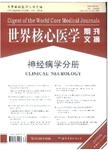自发性颈动脉夹层的蛋白酶抑制因子
Protease inhibitors in spontaneous cervical artery dissections作者机构:Department of Psychiatry University of Mü nster Albert-Schweitzer-Str. 11 48149 Münster G ermany Dr.
出 版 物:《世界核心医学期刊文摘(神经病学分册)》 (Digest of the World Core Medical Journals:Clinical Neurology)
年 卷 期:2005年第1卷第5期
页 面:60-60页
学科分类:1002[医学-临床医学] 100204[医学-神经病学] 10[医学]
主 题:颈动脉夹层 抑制因子 动脉组织 颈内动脉 动脉疾病 动脉瘤患者 肌纤维发育 巨球蛋白 试验研究
摘 要:Background and Purpose-Observations in patients with arterial aneurysms, fi bromuscular dysplasia, and spontaneous cervical artery dissection (sCAD) indicat e that protease inhibitor deficiency might boost the enzymatic destruction of ar terial tissue and increase the risk of these arterial wall diseases. Here we pre sent the first large investigation of the protease inhibitor hypothesis in patie nts with sCAD. Methods -Eighty patients with sCAD were compared with 80 age- and sex-matched healthy individuals, α 1-antitrypsin (α 1)and α 2-macro globulin (α 2-MG) levels, and α 1-AT genotypes were assessed and compared between groups. Results -α 1-AT and a2-MG levels as well as α 1 genotype s did not differ significantly between patients and controls. The frequency of Z alleles in the patient group was higher than in the control group and than in o ther cohorts from Europe; however, the difference remained nonsignificant. All p atients with Z alleles had internal carotid artery dissections. Conclusions -O verall, this data does not support the hypothesis that protease inhibitor levels or α 1 genotypes play an important role in the etiology of sCAD. The present d ata does not exclude that the Pi-Z allele might have an influence on subgroups of sCAD, such as internal carotid artery dissections.



